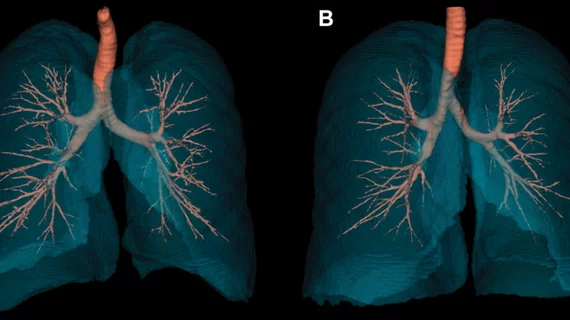Women at higher risk for COPD thanks to smaller airways, even if they’re nonsmokers
A new Radiology study found that women have smaller airways than men, which can lead to a higher risk for chronic obstructive pulmonary disease (COPD) and resulting symptoms, including airflow blockage and breathing-related problems.
To make the determination, researchers used chest CTs to look at airway lumen sizes, accounting for individual differences in height and lung size.
”These lower baseline values in women conferred lower reserves against respiratory morbidity and mortality for equivalent changes compared with men,” wrote the study's lead author, Surya P. Bhatt, MD, MSPH, Associate Professor of Medicine at the University of Alabama at Birmingham.
While men still suffer higher COPD-related mortality than women and are also diagnosed at higher rates, its prevalence in women appears to be rising. A statement about the study highlighted changes in smoking behavior and increasing rates of urbanization as potential reasons for the increase, combined with the fact that women’s smaller airway sizes mean they may suffer greater impacts from these trends.
"The prevalence of COPD in women is fast approaching that seen in men, and airway disease may underlie some of the high COPD numbers in women that we are seeing," said the study's lead author, Surya P. Bhatt, MD, MSPH, Associate Professor of Medicine at the University of Alabama at Birmingham, in the statement.
Researchers also examined how smoking history impacted TK, separating the 10,000 participants into never, current, and former smokers. They found that even women who had never smoked had smaller airways than men who had never smoked, putting them at greater risk for COPD. Population-based studies show that among people who have never smoked, women make up two-thirds of those with COPD, the authors note.
Additionally, women who were current or former smokers saw more severe airflow obstruction and had worse survival rates than men.
“These structural differences may underlie some of the differences in predisposition to chronic obstructive pulmonary disease in men and women. These findings have implications for studies targeting disease progression,” Bhatt said.
